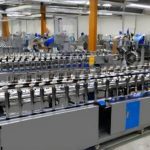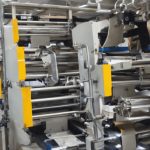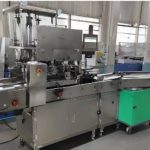
Understanding Aseptic and Hot Filling
In the food and beverage industry, packaging plays a crucial role in ensuring product safety, quality, and shelf life. Two common methods used for packaging liquid products are aseptic filling and hot filling. Both techniques aim to preserve the product by preventing microbial contamination, but they achieve this through different processes and are suitable for different types of products. Understanding the differences between these two methods is essential for manufacturers to choose the right packaging technique for their products.
Sterilization of the Product
The product is sterilized using methods such as ultra-high temperature (UHT) processing, where it is heated to a high temperature for a short period. This kills any microorganisms present in the product, ensuring it is safe for consumption.
Sterilization of the Packaging
The packaging material is sterilized separately, often using methods like hydrogen peroxide or steam. This ensures that the packaging is free from any contaminants that could spoil the product.
Filling in a Sterile Environment
The sterilized product is filled into the sterilized packaging in a sterile environment, typically in a clean room or using specialized aseptic filling machines. This prevents any contamination during the filling process.
Heating the Product
The product is heated to a temperature typically between 85°C to 95°C (185°F to 203°F) for a specific period to ensure that any microorganisms are killed. This process is known as pasteurization.
Filling While Hot
The hot product is then filled into the packaging immediately. The heat from the product sterilizes the packaging, ensuring that no contaminants are present.
Cooling the Product
After filling, the product is rapidly cooled to prevent degradation of its quality. This step is crucial to maintain the taste, color, and nutritional value of the product.
Temperature Sensitivity
Aseptic filling is suitable for products that are sensitive to heat and cannot withstand the high temperatures used in hot filling. In contrast, hot filling is appropriate for products that can endure heat without losing quality.
Shelf Life
Aseptic filling generally provides a longer shelf life compared to hot filling, as it involves a more thorough sterilization process. Products filled aseptically can often be stored at room temperature for extended periods.
Cost and Complexity
Aseptic filling requires more complex and expensive equipment due to the need for a sterile environment and separate sterilization processes for the product and packaging. Hot filling is generally less costly and simpler, as it relies on the heat of the product to sterilize the packaging.
Nutritional and Sensory Quality
Aseptic filling is better at preserving the nutritional and sensory qualities of the product, as it avoids prolonged exposure to high temperatures. Hot filling, while effective, can sometimes lead to changes in taste, color, or nutritional content due to the heat.
Conclusion
Choosing between aseptic and hot filling depends on the specific requirements of the product, including its sensitivity to heat, desired shelf life, and cost considerations. Both methods have their advantages and are widely used in the food and beverage industry to ensure product safety and quality. Manufacturers must carefully evaluate their products and production capabilities to select the most suitable filling method.





